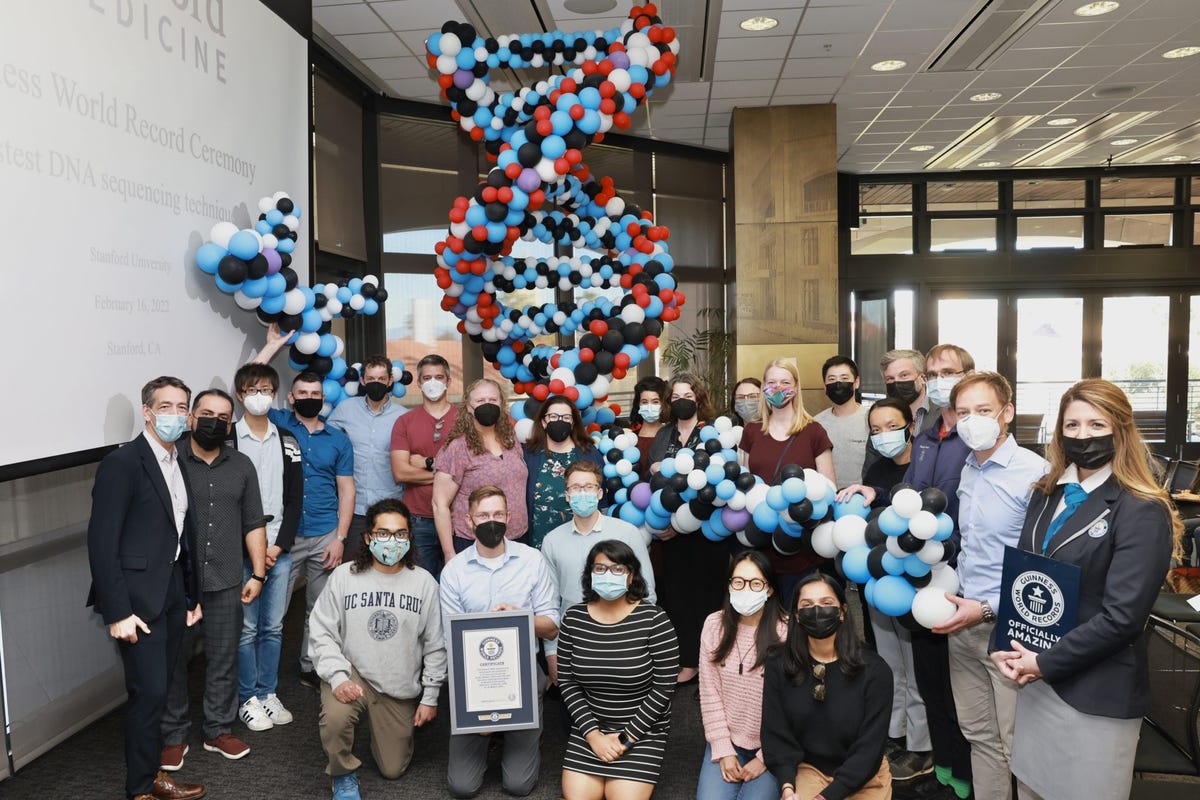[ad_1]

Image: Steve Fisch/Stanford University.
A Stanford University-led research team has set a new Guinness World Record for the fastest DNA sequencing technique using AI computing to accelerate workflow speed.
The research, led by Dr Euan Ashley, professor of medicine, genetics and biomedical data science at Stanford School of Medicine, in collaboration with Nvidia, Oxford Nanopore Technologies, Google, Baylor College of Medicine, and the University of California, achieved sequencing in just five hours and two minutes.
The study, published in The New England Journal of Medicine, involved speeding up every step of genome sequencing workflow by relying on new technology. This included using nanopore sequencing on Oxford Nanopore’s PromethION Flow Cells to generate more than 100 gigabases of data per hour, and Nvidia GPUs on Google Cloud to speed up the base calling and variant calling processes.
“We had to completely rethink and revamp our data pipelines and storage systems,” Ashley said.
The researchers also relied on the Nvidia Clara Parabricks computational genomics application framework to speed up the genome diagnosis.
“It was just one of those amazing moments where the right people suddenly came together to achieve something amazing,” Ashley said. “It really felt like we were approaching a new frontier.”
For the study, the team tested the accelerated genome sequencing technique on undiagnosed patients in Stanford hospitals’ intensive care units. A total of 12 patients enrolled and had their genomes sequenced. Of the total, five patients received a speedy return on their genetic diagnosis. In one of the cases, it took only five hours and two minutes.
The researchers believe reducing the DNA sequencing time would mean clinicians can diagnose patients and provide tailored treatments faster. The previous Guinness World Record for DNA sequencing was 14 hours held by Rady Children’s Institute.
The team is now looking to reduce the time even further, believing it could be halved again.
“I think we can halve it again,” Ashley said. “If we’re able to do that, we’re talking about being able to get an answer before the end of a hospital ward round. That’s a dramatic jump.”
Related Coverage
New file format helping researchers reduce DNA analysis time
Processing data produced from DNA nanopore sequencing now takes half a day, instead of two weeks.
Researchers use Nvidia GPUs to simulate a living cell
Scientists at the University of Illinois at Urbana-Champaign have created a 3D simulation of a living minimal cell, using Nvidia GPUs to simulate 7,000 genetic information processes over 20 minutes.
Nvidia, Harvard researchers use AI to find active areas in cell DNA
Using a new deep learning toolkit called AtacWorks, researchers are studying how diseases and genomic variation influence specific types of cells in the human body.
This high-performance computer just smashed a world record for solving a millennia-old math problem
Calculating the number Pi has always captured mathematicians’ interest. This high-performance computer just took the challenge one step further.
[ad_2]
Source link

